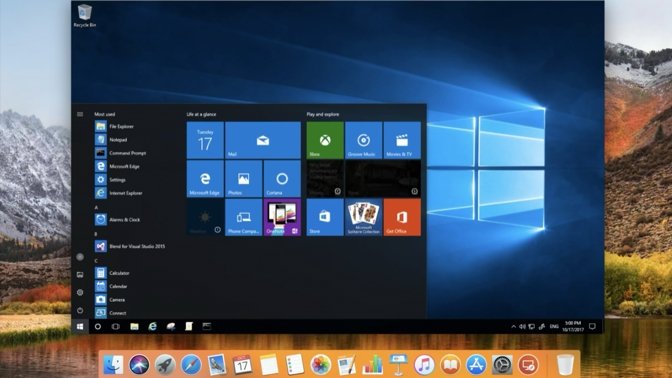Microsoft Remote Desktop updated for Apple Silicon
Microsoft has released an update to its Remote Desktop app to natively support Apple Silicon on M1 Macs.

Microsoft Remote Desktop
Microsoft's long-standing Remote Desktop application lets Mac users connect and use PCs, or virtual Windows apps. Rather than running Windows on the Mac itself, it's a remote connectivity solution which now works natively on M1 Macs.
"In this release we've made some significant updates to the shared underlying code that powers the Remote Desktop experience across all our clients," says Microsoft in its Mac App Store listing.
The most significant update is the native support for M1, but the new release also "addressed macOS 11 compatibility issues." It now requires macOS 10.14 or later.
Stay on top of all Apple news right from your HomePod. Say, "Hey, Siri, play AppleInsider," and you'll get latest AppleInsider Podcast. Or ask your HomePod mini for "AppleInsider Daily" instead and you'll hear a fast update direct from our news team. And, if you're interested in Apple-centric home automation, say "Hey, Siri, play HomeKit Insider," and you'll be listening to our newest specialized podcast in moments.

Microsoft Remote Desktop
Microsoft's long-standing Remote Desktop application lets Mac users connect and use PCs, or virtual Windows apps. Rather than running Windows on the Mac itself, it's a remote connectivity solution which now works natively on M1 Macs.
"In this release we've made some significant updates to the shared underlying code that powers the Remote Desktop experience across all our clients," says Microsoft in its Mac App Store listing.
The most significant update is the native support for M1, but the new release also "addressed macOS 11 compatibility issues." It now requires macOS 10.14 or later.
Stay on top of all Apple news right from your HomePod. Say, "Hey, Siri, play AppleInsider," and you'll get latest AppleInsider Podcast. Or ask your HomePod mini for "AppleInsider Daily" instead and you'll hear a fast update direct from our news team. And, if you're interested in Apple-centric home automation, say "Hey, Siri, play HomeKit Insider," and you'll be listening to our newest specialized podcast in moments.

Comments
1) To use it you’ll need to have Windows 10 Pro on the remote machine, not Windows 10 Home.
2) Why doesn’t Apple offer a similar app for free to support the same capability for Mac targets? It’s $80 for an app that has a 2-star rating on the App Store.
I know that there are plenty of VNC flavored clients out there for accessing a remote Mac. But once you’ve experienced the performance difference between Microsoft Remote Desktop versus any VNC type of client, you’ll never want to use the latter unless you have no choice.
/System/Library/CoreServices/Applications/Screen Sharing.app
As I understand it, VNC (Virtual Network Computing) is simply sending the contents of the screen across the network - screen sharing. This can work pretty well over a fast enough connection, but the only way to improve the speed is to drop the colour fidelity. RDP, on the other hand, leverages the native OS frameworks - on the remote machine, the GUI primitives ("draw a window at these coordinates, with this content") are tracked, sent across the network to the local machine, translated if necessary, and executed. User interaction is transmitted as events ("Mouse down at these coordinates") from the local machine to the remote one. By reducing things to instructions rather than results you get a much more efficient compression of the data that needs to travel across the network, resulting in improved performance. You still have to wait for data-intensive items, like images or videos, but overall it is much, much quicker and more responsive than screen sharing.
Screen Sharing on the Mac can mirror an existing, logged in user, or you can log in as a different user. Performance is not related to taking over the interactive session on the host. And RDP can have a different user than is currently, interactively using the host, but the interactive user is screwed - they get a black screen when RDP session takes over.
I actually find Screen Sharing better performing than Microsoft RDP - I use both daily, sometimes several hours a day. Performance is often most limited by bandwidth between the host & the remote client. On a 1Gb, good, wired network, screen sharing beats RDP every time.
Screen sharing also has no limits to the number of sessions on the host. Windows Pro only allows two, and if a real person is using the host interactively, they are screwed, even if you don't want to use the same account.
Apple has a similar stupid restriction in their own screen sharing software which requires an expensive purchase before users can support their elderly parents or grandparents via screen sharing but unlike Remote Desktop, Apple's screen sharing is too buggy to be used.